Following on from the “Flying Coffins” article was that there were some other Luftwaffe aircraft I hadn’t mentioned including the Me 210/410s and this is a fair comment but it leads to a much bigger story.
I should really lay my cards on the table as well before I begin. I am a huge fan of the Bf 110 going back thirty odd years from when I first played a Battle of Britain flight simulation (Reach for the Skies and Their Finest Hour) and my friend Dave said;
“Don’t fly the 110, it is rubbish, far too slow and can’t turn.”
Challenge was accepted and I found I actually loved it and my love for aviation and the Luftwaffe was born so…. that said let’s look at why the Bf 110 was a fantastic idea and awfully underrated but at the same time why the Me 210 was bad and the Me 410 is too little too late.
In the wake of the First World War and the development of aeroplane designs during the 1920s and early 1930s saw many new ideas thrown around by air ministries and manufacturers, some of which were gold dust, some of which were somewhat crap and others fell somewhat short of the ambitious proposition.
One of these propositions was for a multi role fighter and so the Kampfzerstorer program was born. Conventional wisdom at the time stated that if an aircraft needed a longer range, the ability to carry a decent bombload or reconnaissance camera, had to be of a size that would require two engines and two crew.
It didn’t take a genius to look at the idea to see that any such aircraft would have some serious drawbacks. In the 1920s and 30s the idea of what made a fighter included a fine balance of speed, agility and armament which sacrificed range and to a degree, armour. The Kampfzerstorer, already on paper, looked like it would struggle in a dogfight with more conventional fighters. The RAF had a sort of Kampfzerstorer in the form of the Hawker Hart (and its variants) which was a light bomber and used for reconnaissance work but also had a fighter variant, the Hawker Demon though as a different airframe to the Hart and not able to be multi-use.
Back in Germany the technical department pointed out all of these issues but the project had a very influential patron in the form of Herman Goring. With the head of the Luftwaffe and Nazi Party grandee championing the idea the Luftwaffe had to look at the proposition and go through the motions with some hoping that sooner rather than later the flaws in the plan would become obvious.
The Luftwaffe dutifully put out the specifications to seven companies to come up with proposals in 1934 including Messerschmitt whose proposal was supported by Ernst Udet who was also exceptionally influential at this point. With all seven companies providing decent proposals to the specifications all were asked to make three prototypes each for evaluation.
By 1935 though things had changed and the Kampfzerstorer idea had been modified to separate the roles of strategic fighter, which could provide long range and durability with increased fire power as well as a fast bomber which became the Bf 162 variation of the Bf 110 airframe which I covered here.
Only Henschel and Focke-Wulf competed with Messerschmitt for the design with the former proposing the Hs 124 which was based around two Junkers Jumo 210 C engines (later changed to BMW 132 Dc Radial engines. Armament was a little weak with a single machine gun in the rear of the turret and one MG FF cannon in the nose. The V3 prototype was upgunned to have a solid nose (after the original glazed one) with two machine guns and two MG FF cannon. The Henschel model also had an internal bomb bay which could be modified for more internal fuel tanks or six 100 kg bombs. Overall it had a speed of 270 mph and a range of up to 2300 miles.
The main Focke-Wulf contender was the Fw 57 which was very disappointing in that it was overweight and handled poorly which was not great for a proposed fighter. The Fw 57 did have a turret mounted to the rear of the turret fitted with a Mg FF cannon and two more mounted in the nose whilst carrying 600 kgs of bombs. It was also even slower than the the Henschel with a top speed of 230 mph
The other Focke-Wulf entry, the Fw 187 was designer Kurt Tank’s suggestion that was not quite in competition with the Bf 110 but in a similar vein - a single seat long range, two engine fighter which had speed and agility to fight a single engine fighter. The original design was rejected by the Air Ministry (RLM) because the Bf 109 was really similar in performance and such an aircraft. Modifications to the design and a certain amount of encouragement by Udet saw the Fw 187 being redesigned as a two manned bomber destroyer and found to be a very decent aircraft that test pilots and even Luftwaffe operational pilots agreeing was superior to the Bf 110 but the RLM did not take the proposal any further than the three prototypes which formed part of the Focke-Wulf factory defence flight in Bremen for the rest of the war.
So let’s look at the eventual winner - the Messerschmitt Bf 110.
The Bf 110 was a monocoque stressed skin fuselage made of a light alloy with space for three crewmen and fitted with the most powerful engines available at the time - Daimler Benz DB 600A. It was a sleek looking aircraft especially in comparison to the Henschel and Focke-Wulf Fw 57. The first prototype was built in 1935 and flew for the first time in May 1936 where it reached a top speed of 314 mph at around 10,000 feet, which was far superior to the other two prototypes. There was a drawback though, the engines were unreliable and gave poor acceleration, the airframe had some stability issues, had a habit to turn during landing and taking off and the undercarriage needed immediate redesign. Two more prototypes were completed that year with the V3 being armed with four machine guns in the nose. The V2 was sent to Rechlin for evaluation and the pilots also reported acceleration issues and a lack of manoeuvrability which was always going to be an issue but with the Henschel and Focke-Wulf models being considered unsuitable the Bf 110 was accepted, mainly under the support of Goring.
Daimler-Benz had already begun phasing out the DB 600A in favour of the DB 601 which were adopted in the Bf 110 A production variant and to be in production for 1938. In the interim the Junkers Jumo 210Da would be used, it was much less powerful but it was what was available and was also powering the Bf 109 in the period.
By the time that the B variant was ready for production the Db 601s were still not ready but the armament had been upscaled to include two Mg FF cannons in the nose along with the four machine guns giving the aircraft quite the punch. There was a bit of a rush to show off the aircraft as General Vuillemin, the French head of the Air Staff was on a tour in Germany and the Luftwaffe wanted to send a message with the new design that they had a competitor for the new Potez 63.
Unlike the Bf 109 the Bf 110 was still not ready for combat trials during the Spanish Civil War and if it had done would some of the glaring issues have been obvious? Even with the lack of quality single seat fighters that the Luftwaffe would face in 1940 there was enough quality that maybe someone would have said “Hang on a second.”
So when it came to it, what was the Bf 110 like as a combat aircraft?
Predictably the Bf 110 did suffer at the hands of faster single seat aircraft. There were losses during the early campaigns in Poland, Norway and Denmark but it was during the invasion of France that things got much worse with Hurricanes, Dewotine D.520s and later Spitfires.
The aerial dominance of the Luftwaffe meant that they operated with a fair amount of impunity but when they were engaged they could not match these aeroplanes in combat. The Zerstorerwaffe pilots developed the defensive circle as a means to protect themselves meaning they could mass their defensive rear guns to cover each other and if anything flew in front of them their forward guns could cut them to ribbons. This worked well against the French airforce’s fighters but against the RAF it was less successful.
Wolfgang Falck later recalled;
I didn’t like the Hurricanes very much but the Spitfires were much worse for us because we are too big, two engine aircraft, a big target, not manoeuvrable enough and not fast enough. So the Spitfire, even the Hurricane was superior to us but the Spitfire was much superior and so the Hurricane was not too bad but the Spitfire was very bad. Also there was the case when I was almost a victim of the Spitfire, it was a miracle for me that I came home.
During the Battle of Britain this became more of a problem as the Luftwaffe didn’t hold aerial superiority and with the Bf 109s operating at the end of their durability it often fell to the Bf 110s to escort the bombers deeper into England and even across the North Sea in the case of Luftflotte 5.
Here is a contentious statement though - There were even times when Bf 109s had to be called in to escort Bf 110s.
I once got a pile on in a Facebook group for saying that from a lot of “experts” but I’m citing A Pritchard’s “Messerschmitt” and also Falck’s sound archive entry. Of course greater research is needed to confirm or deny it.
The Battle of Britain really did demonstrate the issues of the Bf 110 as a long range strategic fighter, in fact all of the problems that had been pointed out during the design and development phase but it continued to have a career but why?
Firstly, there was nothing else and it had the range and durability to engage over large bodies of water or land (like North Africa) and also was good enough to engage enemy fighters of a lesser quality, like the Soviet airforce.
Secondly was its ability to diversify.
Ok the Bf 110 D was a washout - basically it was a long range variant of the C with an elongated fuel tank beneath the hull made out of wood and canvas that was as explosive as it sounds when combined with a tracer bullet… The use of drop tanks made it better though but still…
The best variant, and my favourite, was the C4/B Jagdbomber (Jabo) which saw the standard fighter having a pair of bombs strapped to the wings (250 kg/550 lb) which, although making the aircraft too heavy meaning the upgraded DB 601N engine had to be used to get it of the ground, gave the Luftwaffe a powerful new option.
Erpobungsgruppe/Experimentalgruppe/Lehrsgruppe 210 became a deadly new force during the Battle of Britain under Hauptmann Walter Rubensdorffer. The unit started very promisingly with low level attacks on ships in the Channel during Kanalkampf. The Bf 110s used their speed to their advantage coming in low (unknowingly beneath the RDF) striking the targets from a shallow diving attack and roaring away before any form of reaction could be enacted. They were used very effectively attacking targets like Manston airfield, which is close to the coast in the same way but there were issues too. On 10th July Erpobungsgruppe 210, escorted by Bf 109s found itself against four squadrons and suffered quite a bit and despite gaining the most Iron and Knight’s crosses than any other unit in 1940 they also suffered four Commanding officers lost in action, including Rubensdorffer who was killed on 15th August during a raid on Croydon which was south of London and far away from the coast giving the RAF time to respond shooting down seven of the twenty two aircraft that had attacked (one was a Bf 109 E4/B Jabo). Predictably the Bf 110 production was halved in 1941 in favour of the new Fw 190, a much superior fighter.
The Bf 110 had also shown that it was more than capable in another way first demonstrated during the Air battle of Heligoland in December 1939 when Bf 110s had been part of the response to the Wellington raid where their heavy forward firing armament caused a lot of damage. The RAF were not, by the summer of 1940, carrying out daylight raids on Germany and had instead moved to night time offensives which, at the time, Flak batteries could not cope with the influx of aircraft and so a proper night fighting force was organised under Major Kammhuber made up of Bf 110s, Ju 88s and some Bf 109s which were soon reassigned back to day operations. Suddenly the drawbacks that the Zerstorer suffered from were no longer an issue and the strengths were invaluable. They had a long durability and had the firepower to take out bombers without having to worry about enemy fighters. The first Whitley to fall was on 20 July 1940 to Oberleutnant Werner Streib.
Without going into too much detail (as I’m aware I’m at 2200 words and I haven’t even mentioned the Me 210 yet!) but the Bf 110 was modified in successive models, especially the G which a surviving model could be seen at the RAF Museum in Hendon, to become a very effective night-fighter. Equipment additions included onboard radar, Schräge Musik guns that faced upwards allowing the aircraft to get into the bomber’s blind spot amongst others.
Of course the Germans needed a possible successor to the Bf 110 and this would be the ill-fated Me 210…
Even before the war commenced the Luftwaffe were looking at successors to the Bf 110 as part of a natural evolution and so in 1938 work began on the Me 210 with a back up contract going to Arado in case the Messerschmitt design was atrocious and what came about was the Arado Ar. 240 fighter and the Ar. 440 as a multi role aircraft but this made it problematic. Whereas the Bf 110 was a heavy fighter which was adapted for other roles the Ar. 240 was envisioned to fill the role of Kampfzerstorer again and it didn’t really know what it was. Unlike the Bf 110 the crew sat in tandem and the guns, instead of a single mounted Machine gun, were also mounted in two remote barbettes either side of the fuselage and remote controlled. It was also one of the victims of the “dive” order for all of the Luftwaffe’s bombers which resulted in some issues with the dive break. It was tested by active units on the Channel front in 1942 but with the Ar. 440 also in pre-production they abandoned the Ar.240. The Ar. 440 was a definite improvement and enthusiastically received by RLM test pilots but was quietly dropped in favour of the Messerschmitt aircraft.
The Me 210 was meant to be the answer to the issues found in the creation of the Bf 110 to create a much better and well rounded aircraft. It looks like a completely different aircraft (especially when they altered the tail arrangement from the twin tail to the single fin in later prototypes. For defence it was fitted, similarly to the Arado machines, with two remote controlled barbettes that had an automatic cut off stop the gunner accidentally blowing the tail off. The first prototype flew on the 5th September 1939 and it was this flight that saw the redesign of the tail arrangement because the test pilot reported a serious directional instability. After the revision in late September and early October the V1 was flown alongside the V2 model which had kept the original tail arrangement to see if that was the issue.
It was.
However the revised V1 still was unstable but not as bad as the V2 and these flaws continued to surface throughout the test phase into early 1940 and a shopping list of other issues became apparent.
So it was unstable, unpredictable, would break into a spin at random moments, turbulence issues that caused the tail array to buffet and the undercarriage would collapse a lot as well. There is a suggestion from a disgraced historian, whose name I won’t mention, that according to Milch’s papers the original design by Waldemar Voight had been tinkered with by Messerschmitt himself and that caused the issues but as I’m not an engineer I can’t say that this is the cause but I felt I would be remiss if I didn’t mention this as a possibility. New attempts to alter the V2 prototype saw the enlargement of the wing-root fillets but it had no effect whatsoever on the turbulence issues. More redesign work on the shape of the cockpit also took place. Dive trials also found a problem with the tail plane breaking off and almost killing Messerschmitt’s chief test pilot, Fritz Wendel and writing off the V2 prototype.
Despite these issues production of the new aircraft was pushed forward in the summer of 1940 and it was decided that before they were handed over to the Luftwaffe’s fighting units they would be used as test aircraft. These were fitted with different pieces of equipment to see how they effected the aircraft such as four bladed propellers instead of three, a new dive break, anti spin parachute.
The RLM had been hoping for the Me 210 to be phased into production in 1941 to replace the Bf 110, one of the reasons for the halving of production numbers of the latter and the Luftwaffe were impatient for the new aircraft.
All of Messerschmitt’s testpilots warned the aircraft was a disaster and there were still far too many issues with it to be issued to the airforce but Dr Messerschmitt felt painted into a corner and started production and issuing of the aircraft to the combat wings with the first being accepted in April 1941. The Luftwaffe’s test pilots examined the aircraft in the autumn of 1941 and immediately came back to their superiors and said that this aircraft should under no circumstances be issued to the fighter units. It is a flying coffin. Germany at this time is a bit chaotic, despite many people thinking the Nazi regime being organised, and the Bf 110s production ceased whilst the Me 210 production picked up even though the Luftwaffe didn’t want it! Indeed sixty four Me 210s were delivered to the Luftwaffe in January 1942 and a commission had to be established to investigate what the heck was going on.
It was a project that saw 370 airframes (in different levels of production - all unwanted, cost the Luftwaffe some 600 aircraft that they were expecting and the Messerschmitt company thirty million Reichsmarks and Willi Messerschmitt had to resign as chairman of his company, it was a real scandal.
By early 1942 more work on the design had improved the aircraft and the V17 test aircraft was considered to finally rectify the issues of the early models in March 1942 and this improved Me 210 was given to the Hungarian air factory, already tooled for standard Me 210s, to build as part of an armament deal in 1942 and eventually they saw service in the Hungarian Royal Air Force only for them to be destroyed by the USAAF whilst they were on the ground.
In combat the Me 210 suffered greatly over the Channel front in September 1942 when they were issued to Erpobungsgruppe 210, now named Schnellkampfgeschwader 210. Hawker Typhoons cut them to ribbons with two being shot down on 6 September over Yorkshire and even Goring weighed in to complain about the aircraft and the design.
The Me 310 was a high altitude fighter based on the Me 210 design and as a replacement for its calamitous forebear. Messerschmitt suggested the aircraft could fill the fast bomber role and the Zerstorer heavy fighter role but the RLT were not enthused and the aircraft was abandoned in the test phase/
The Me 410 though is a completely different proposition. It was a marked improvement on the original Me 210 airframe despite them looking very similar and the work through the spring of 1942 was improved upon and when the modified Me 210 prototypes flew in the summer of 1942 they saw that the previous aircraft’s issues had been sorted out and it was an improvement on the older Bf 110. In January 1943 the first aircraft were accepted by the Luftwaffe and in April that year 5./KG 2 had their Do 217 bombers replaced with Me 410s and the crews given time to acclimatize to the new aircraft but they soon reverted back to the Dornier. Instead V./ KG 2 was formed to test the aircraft as schnellbombers over England but they were soon losing aircraft to Mosquito nightfighters.
Does this mean the aircraft crap?
I’d argue no and there is a bit of a long answer to this. Werner Baumbach, a famous German bomber pilot wrote in his book “Broken Eagle” that the psychology of the bomber pilot was different to the fighter pilot basically saying that bomber pilots tended to be serious and methodical whereas the fighter pilots were basically boy racers. The Me 410 was basically a fighter with bombs and the pilots who had flown slower Do 217s were not used to the high speed attacks and fighter nature of the aircraft. Other pilots who served with KG 51 complained after converting from Ju 88s. They found flying and navigating at high speed alone, when before they could rely on other crew to assist, and at night was just too much of a culture shock. In May 1944 the bomber variants were ordered to be converted to fighter variants.
The fighter and bomber destroyer version worked a lot better for the Luftwaffe with BK 5 cannon armed aircraft being sent to II/ZG 26 for operations against the Americans in September 1943. It was effective against the bombers but was no match for the Mustang escorts and after a disastrous incident on 13th May 1944 the unit was withdrawn and later converted to Fw 190s though other units persisted. By the end of the year the Me 410 was just being used as a high speed reconnaissance aircraft.
So was the Kampfzerstorer/Zerstorer project a failure. Well… yes, but also no. Having one aircraft that can do everything did prove problematic for the Messerschmitt werke and the answer they gave to the question had severe problems. The Bf 110 served well but not in combat with single seat fighters and the writing should have been on the wall in the summer of 1940 for future aircraft development. Yes that would have been too late for the Me 210 design which was already well on the way but it could have stopped the Me 410s development. Though at the same time Zerstorer aircraft were perfect for engaging the bomber streams during the development phase in 1943 but the arrival of Mustangs flying all the way into Germany and back again spelt the end of the project.
Were there successful Zerstorer aircraft? The Ju 88 did pretty well, it, like the Bf 110, ended up filling a number of different roles within the Luftwaffe including bomber, dive bomber, fast reconnaissance, night fighter and heavy fighter for marine patrols and was not pitched against single seat fighters. Its nature as a bomber meant that it would fare even worse than the Bf 110 but it was fairly successful.
The RAF attempted the same thing with the Blenheim fighter but soon abandoned it when they struggled against Bf 109s and although the Whirlwind was developed and proved a pretty decent aircraft it never really went any further. The ultimate RAF Kampfzerstorer like aircraft is the Mosquito which upset so many Luftwaffe Commanders. The Americans had the P 38 which proved two engine fighters could be very nimble and effective but ultimately the best long range fighter that could act as a bomber escort, light ground attack and air superiority fighter is the P 51 Mustang.
Though I think those are all stories for another day!


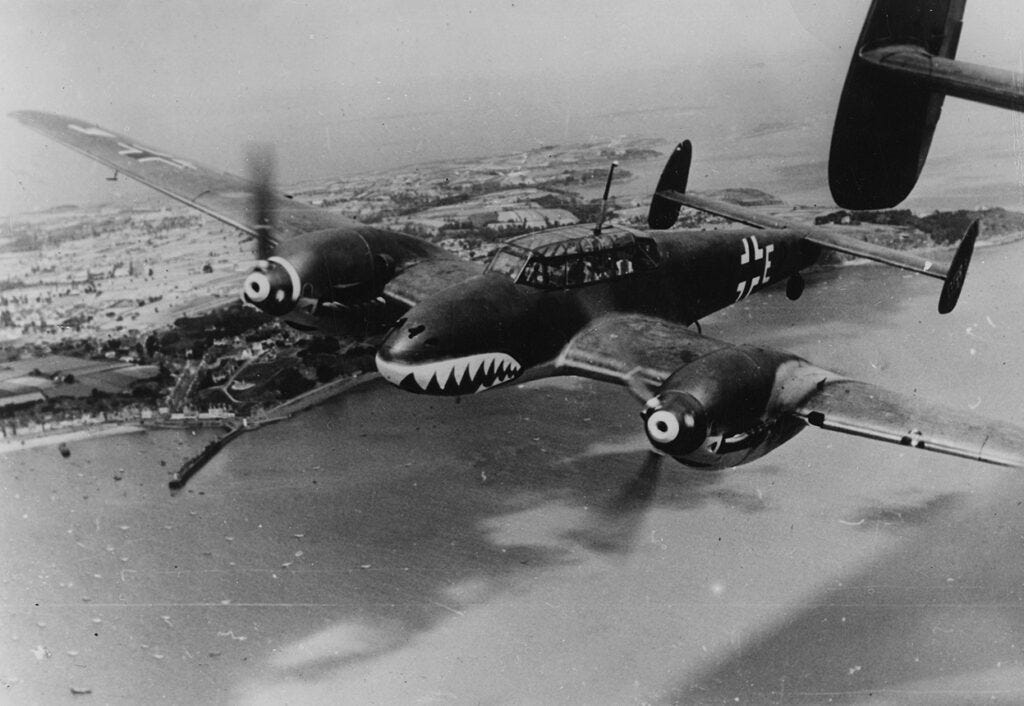
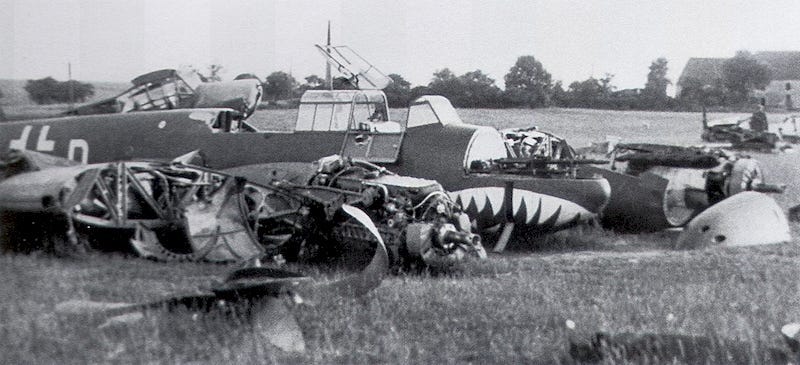
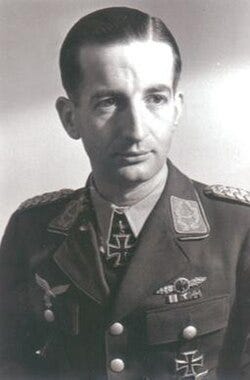
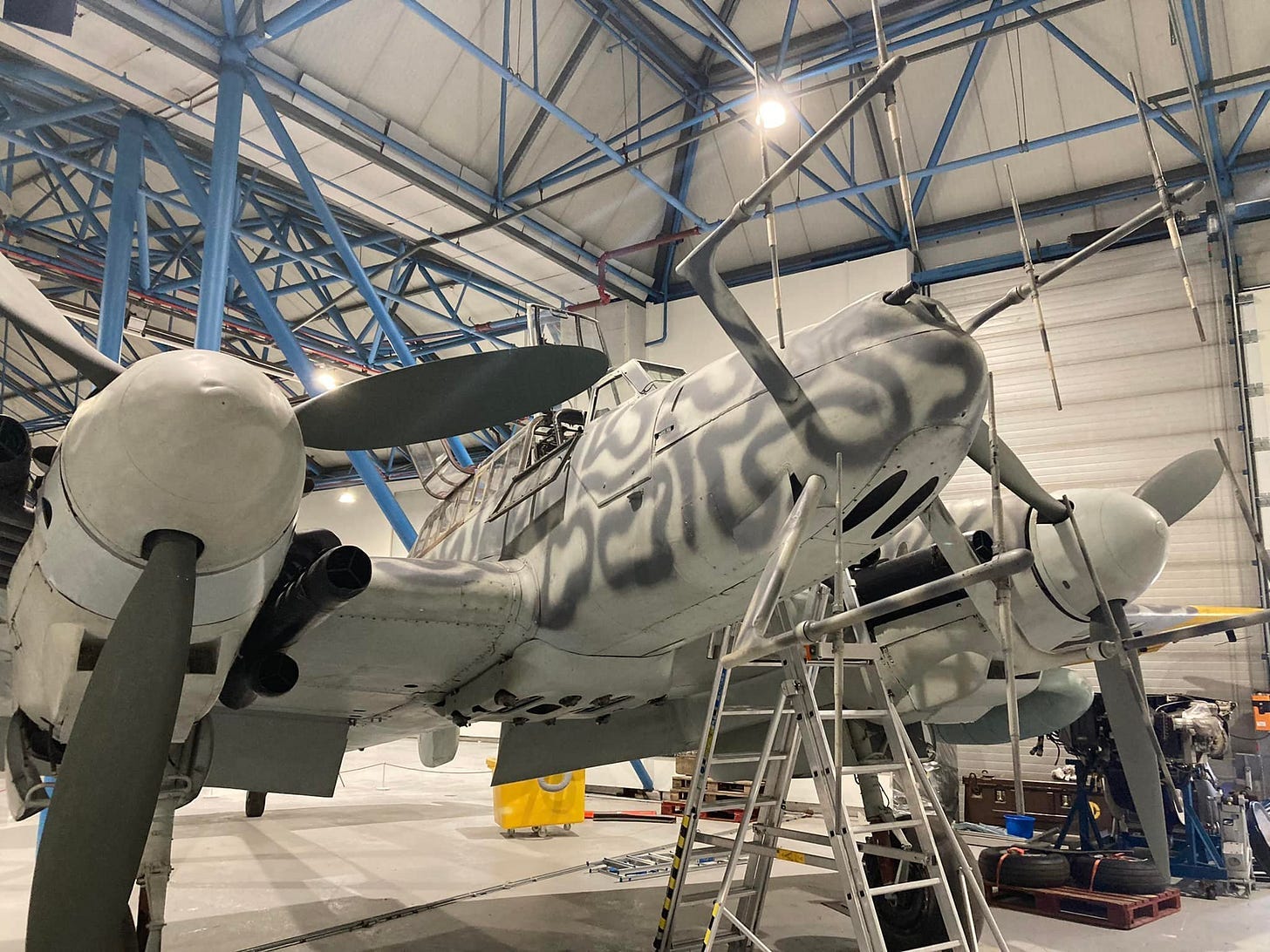
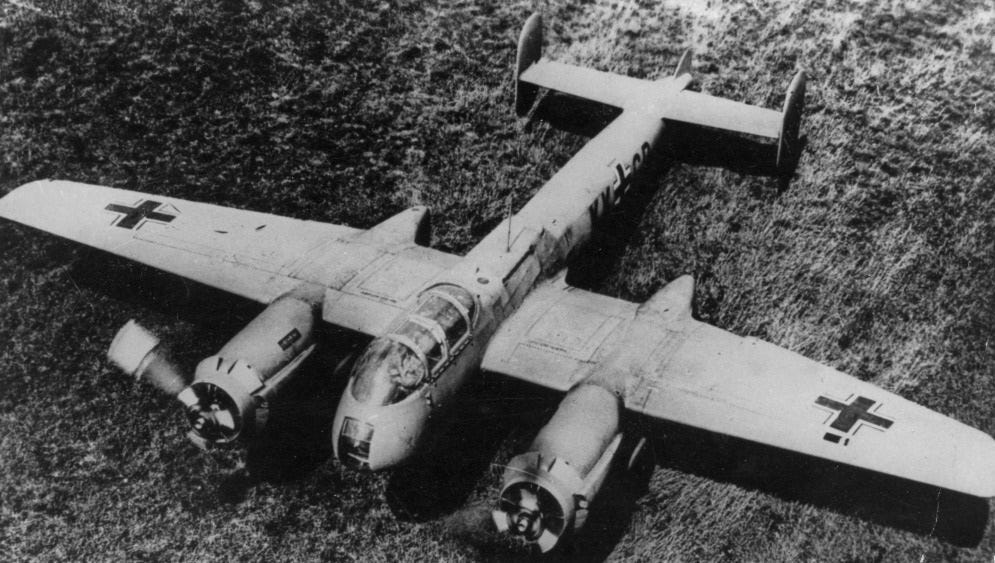
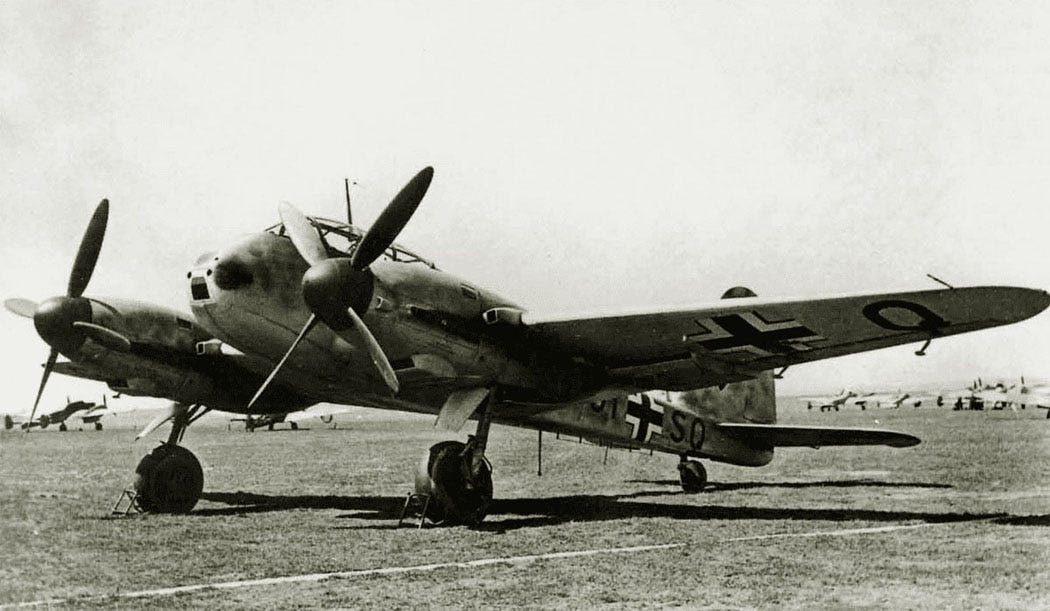

Great article, Thank you Chris; I look forward to you writing about the Whirlwind.